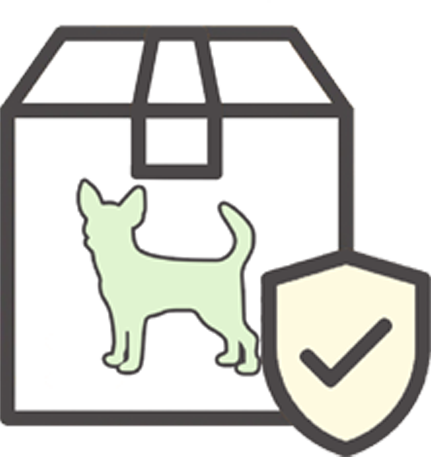Dealing with Springtime Pests and Parasites
Updated On: Monday, October 20, 2025 09:57:39 AM America/Los_Angeles
Humans and dogs alike are eager to head back out as the weather gets warmer and the sun a little brighter! But as spring approaches, so do those pesky pests. Though it may be difficult to avoid pests entirely, there are many steps that dog pawrents can take to make sure their fur babies stay healthy and pest-free.
Photo by Henry Ravenscroft
Common Springtime Pests and Parasites
Fleas, ticks, and tapeworms are the pests and parasites most commonly encountered during the spring. Ticks are generally active from May through August. And while fleas are active year-round, they thrive in temperatures that are 65-80 degrees. Tapeworms typically enter a dog’s system through fleas, which is why flea prevention is doubly important. Fleas that are harboring tapeworms can be ingested while grooming, and dogs in turn become the host for these icky parasites.
Tips for Pest and Parasite Prevention
- Flea and tick protection: If your doggo is taken outside regularly, it’s important that they have consistent protection. There are many options for prevention including collars, topical treatments, pills, and injections. Your vet can help determine what the best method would be if you feel uncertain about which is the most appropriate for you and your dog.
- Spring cleaning: Indoor cleaning should be done regularly during the spring. Floors should be vacuumed–even wood floors–as pests can live in any kind of crevice. Bedding (or anything else your furry one likes to rest on) should also be washed frequently.
- Indoor prevention: Pests can be deterred before your furry one even steps a paw outside. Home and pet safe deterrents are one way to keep dogs protected from pests during outdoor activities. Natural products like DoggieLawn’s Diatomaceous Earth or Cedarcide’s Bug Spray are two versatile options. Both of these are safe enough to use on your pooch or household items such as the couch.
- Limit exposure: If parasites pose a high threat (for instance, with unvaccinated pups), utilize an indoor pet potty until it’s safer to go out. A real grass pee pad like DoggieLawn can give dogs a taste of the great outdoors without the risk of pests and parasites. Another option is to avoid densely wooded or grassy areas.
- Outdoor maintenance: For pawrents lucky enough to have outdoor spaces, maintaining the lawn and yard are helpful for limiting the proliferation of pests. While it’s near impossible to get rid of pests entirely in an outdoor area, keeping shrubs trimmed and the grass low are just two ways to keep pests from overpopulating your outdoor spaces.
- Regular baths and inspections: Bathing after being outdoors is important for two reasons. First, warm, soapy water can aid in getting rid of existing pests and their larvae. Second, bathing allows you to inspect a dog’s coat more thoroughly. It can be difficult to look through dry fur for pests, which have the advantage of hiding under dense coats. When the coat is wet, burrowing pests like ticks become more visible.
- Vaccinations: Before warmer weather comes beckoning, make sure your fur baby is all caught up on vaccinations to protect them from any pest-related diseases or illnesses that they may be exposed to in the spring.


